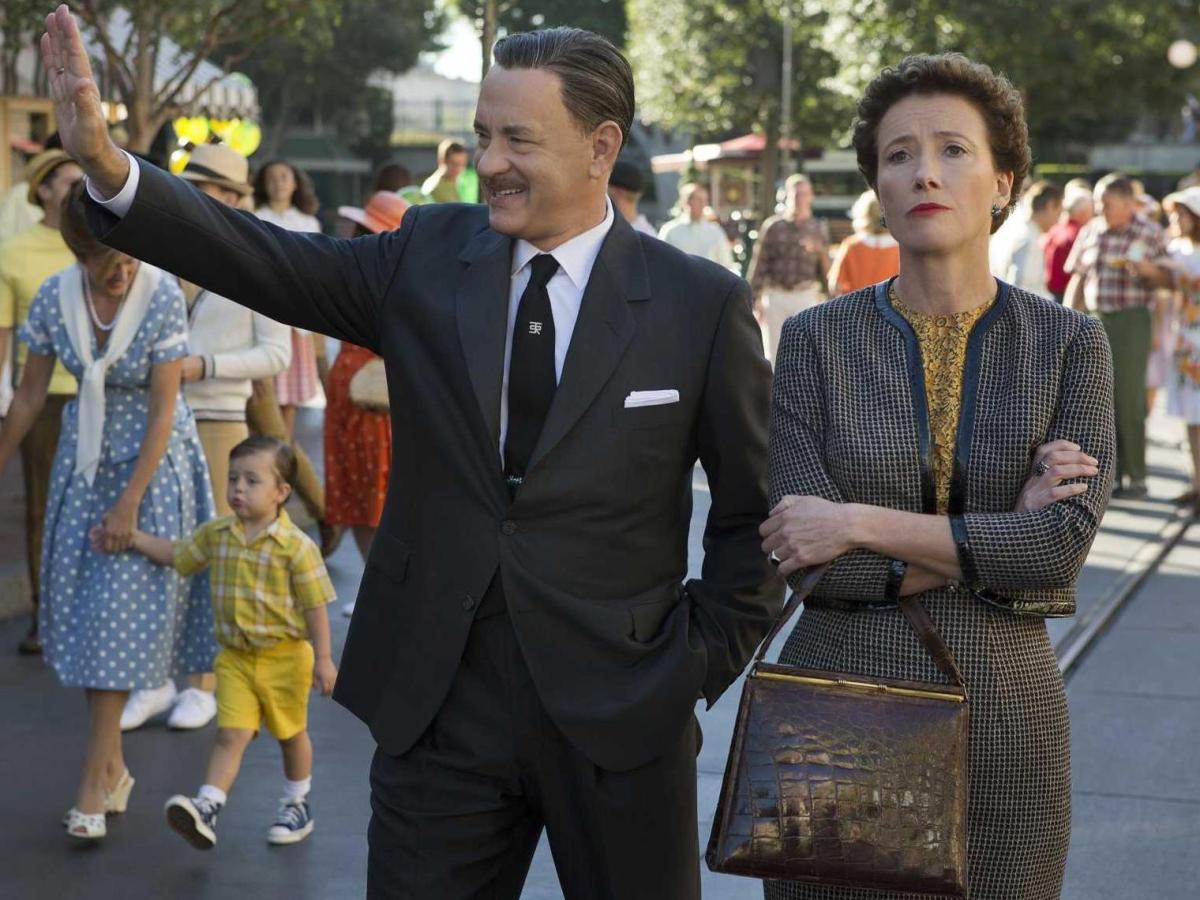Before Mary Poppins became the hit film audiences now know and love, the name belonged to a series of eight children’s books by Australian-born novelist P.L. Travers – and if the author had had her way, never the twain would have met. For two decades, Travers (Emma Thompson, Beautiful Creatures) resisted Walt Disney’s (Tom Hanks, Captain Phillips) attempts to turn her beloved magical nanny into a movie; that, five decades on, the feature is still a family favourite intimates the outcome of that battle.
There is more to the story of course, Travers and Disney eventually finding a way to begrudgingly come together to bring one of the most adored fictional figures in cinema history to the screen. There is also more to the story than the version director John Lee Hancock (The Blind Side) and writers Kelly Marcel (TV’s Terra Nova) and Sue Smith (Mabo) present in Saving Mr. Banks. In chronicling the journey of Mary Poppins from Travers’ books to Disney’s film with an ingratiating eye, there is never any doubt that the interpretation of events resounds with the studio’s trademark sheen.
Much of Saving Mr. Banks dwells in Travers’ upbringing in Australia (as played as a child by debutant Annie Rose Buckley), and her close relationship with her oft-drunken father (Colin Farrell, Dead Man Down); there’s little subtlety in conveying the influence of her early years on her famous creation, and on her later-in-life less-than-friendly temperament. The feature flits between the two timeframes, showing childhood happiness slowly tinged with sorrow, adult cantankerousness gradually cracked by perseverance, and the fictional character that is the product of both.
In a performance more rounded than the writing would suggest, Thompson is fussily terrific, making her prickly protagonist a source of endearment and inspiration even with so much of her real-life narrative left unsaid. Hanks may be all smiles as the famous animator turned entertainment mogul, but his warmth is contagious, adding earnestness and reassurance to otherwise potentially too-sweet material. Indeed, it is the performances that imbue depth beneath the charming façade, hinting at more than the standard fable. Farrell, in particular, proves devastating and dashing in his best work in some time, whilst Paul Giamatti (Parkland), Bradley Whitford (The Cabin in the Woods), Jason Schwartzman (Moonrise Kingdom) and B.J. Novak (The Internship) bring measured levity.
Such well-pitched portrayals stem from the film’s obvious affection for its subject; Disney’s investment in the story is vast and evident, but the actors also connect with the embellished details. Filmmaker Hancock works with saccharine sentiment and handsome imagery, proving effective with both, apparent emotional manipulations and all. And, for all its loving rendering, Saving Mr. Banks doesn’t hide its existence as a savvy ode to its founder and icon as much as a celebration of one of its greatest achievements; this is heartfelt Mickey Mouse-infused reinforcement at its most crowd-pleasing and palatable. A spoon full of sugar helps Disney’s twee take on its own history go down, and it’s all best taken with a grain of salt, but the confection remains easily consumed.
Rating: 3 stars out of 5
Saving Mr. Banks
Director: John Lee Hancock
UK/US/Australia, 2013, 125 mins
Release date: January 9
Distributor: Disney
Rated: PG
Actors:
Director:
Format:
Country:
Release:





